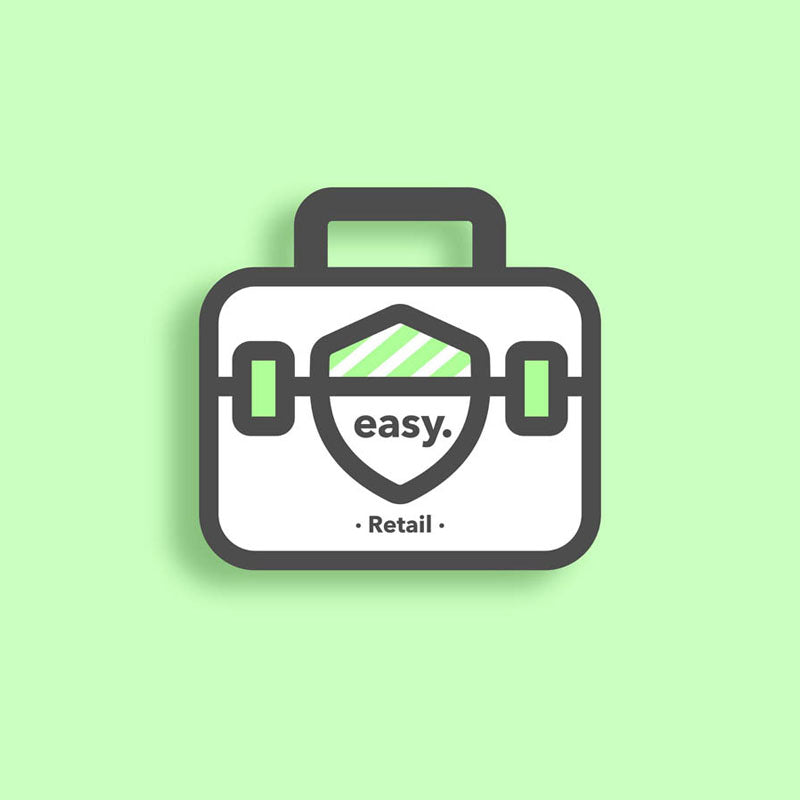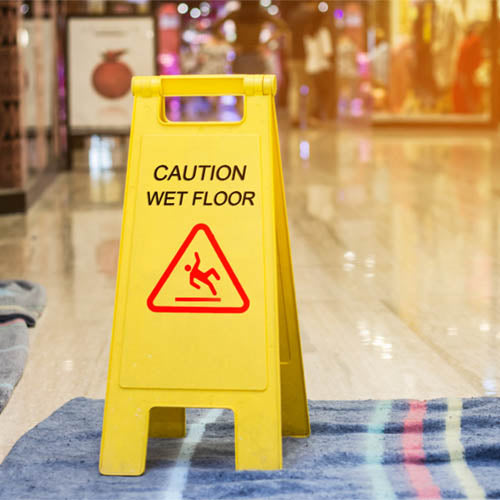
Retail Store Health and Safety Templates & Guidance
Pre-filled, editable health and safety documents for retailers, shops, boutiques, pop-up retail spaces, and small retail businesses — including risk assessments, policies, fire safety templates, COSHH documents, and more to keep your staff and customers safe.

Keep your retail shop safe and compliant with our easy-to-use health and safety templates.
Simplify health and safety management in your retail store, shop, or outlet with our industry-specific templates. Whether you’re running a busy high-street shop or boutique, managing a department store, or operating a temporary pop-up retail space, our editable templates help you stay compliant with regulations while protecting staff, customers, and contractors from everyday risks in fast-paced retail environments.
Many templates come pre-filled with detailed, retail-specific content — from risk assessments and health and safety policies to fire safety forms, COSHH documents, accident reports, and staff safety guidance. This makes completion quick, accurate, and stress-free. With our ready-to-use tools, you can focus on running your retail business efficiently, supporting your team, and delivering a safe and enjoyable shopping experience while maintaining the highest standards of compliance.

Beyond the Sales Floor: Health and Safety Priorities for Retail Success
In the bustling world of retail, success is often measured by sales targets, customer satisfaction, and brand reach. However, beneath the impressive displays and the busy hum of cash registers, lies a critical foundation that supports the entire operation: health and safety. Ensuring a safe shopping and working environment is not just a legal requirement but a vital component of a thriving retail business.
Why Health and Safety Matter for Retailers
Retail environments are unique. Unlike office settings, they are dynamic spaces that constantly change with new promotions, products, and people. This means that the potential for hazards such as slips, trips, and falls, is amplified. Moreover, the well-being of staff operating in such environments is paramount; after all, a happy team is the beating heart of any successful retail brand.
Prioritising Employee Well-being
Investing in the health and safety of retail staff is an investment in the company’s future. Training employees on proper manual handling techniques can dramatically reduce workplace injuries. Additionally, implementing ergonomic solutions, such as lifting aids, can minimise the risks associated with repetitive tasks and prolonged standing, leading to increased productivity and morale.
Crafting a Safe Customer Experience
Customers expect a safe shopping experience. Regular risk assessments and clear signage can go a long way in preventing accidents. Moreover, having robust procedures for emergency situations, such as fires or medical emergencies, not only ensures customer safety but also builds trust in the brand.
Building a Culture of Safety
Health and safety should be ingrained in the company culture, not just seen as a compliance obligation. Regular staff training, open communication channels, and a non-punitive approach to reporting near-misses can foster a culture where safety is everyone's responsibility.
In Summary...
In retail, success on the sales floor is only part of the picture. Behind the scenes, health and safety is the unsung hero. By giving it priority, retailers can ensure the longevity of their business, the well-being of their staff, and the loyalty of their customers. When health and safety become part of a brand’s identity, they not only prevent negative outcomes but also contribute positively to the company’s reputation and bottom line. Let's remember, a successful retail space is a safe retail space.
Top 3 Health and Safety Hazards in Retail Stores:
-

Manual Handling and Ergonomics
View ProductsRetail workers often engage in lifting, carrying, and moving stock, activities that, without proper training or correct manual handling techniques, can lead to a significant risk of musculoskeletal injuries. The prevalence of repetitive tasks, prolonged periods of standing, and poor workstation ergonomics can further contribute to the occurrence of strains and overexertion injuries.
-

Slips, Trips, and Falls
View ProductsThese are the most common accidents in retail settings, often resulting from hazards such as wet floors, uneven floor surfaces, obstructions in aisles, or improper footwear. Inadequate responses to spillages and insufficient lighting that leads to reduced visibility are also significant contributing factors. To mitigate these risks, it's essential that regular maintenance checks are performed, and staff are trained to prevent such incidents.
-

Violence and Abuse
View ProductsStaff in retail environments can face aggressive behaviour from customers and, in some unfortunate cases, may be subjected to robberies and related threats. This is not only a physical risk but can also have psychological impacts often manifesting as increased stress levels, heightened anxiety, or even long-term emotional trauma that can affect personal well-being and job performance.

Why pay expensive consultant fees when you can manage health and safety yourself?
Improve your compliance while saving time and money by creating health and safety documents, customised to your business, yourself. Our health and safety range for retailers, shops, boutiques, pop-up stores, and small retail businesses covers a suite of essential templates including health and safety policies, risk assessments, COSHH forms, fire safety templates, health and safety guidance, safety posters and more.
Benefits of managing health and safety yourself...
-

Improve safety
Health and safety at work is about preventing accidents, incidents and ill-health by assessing the work environment, the activities within it, and taking appropriate action.
-

Ensure compliance
Our ready to use templates, many of which are pre-filled, will enable you to quickly increase your compliance to health and safety law.
-

Save money
With health and safety consultants often charging upwards of £400 per day, there is a better way. Take control and save yourself time and money.

Taking the Stress Out of Retail Health and Safety Compliance
Running a retail business — whether it’s a busy high-street shop, a department store, an independent boutique, or a temporary pop-up shop — means juggling countless responsibilities at once. From managing stock and supporting staff to serving customers and keeping operations running smoothly, it’s easy for health and safety compliance to slip further down the list than it should.
For many retail store owners and managers, finding the time and resources to properly implement and maintain safety measures can feel overwhelming. The focus is often on sales, customer experience, and day-to-day operations, but neglecting compliance can lead to unnecessary risks that impact your team, your customers, and your reputation.
At easyhealthandsafety, we take the pressure off retail businesses by providing ready-to-use templates and practical guidance that are affordable, simple to edit, and tailored to the retail industry. Our pre-filled retail risk assessments, health and safety policies, fire safety forms, COSHH documents, and staff guidance tools help you protect your people, your customers, and your business — so you can focus on what matters most: delivering excellent service and growing your retail store with confidence.
Frequently Asked Questions
Retail Store Health and Safety FAQs
How can I create a risk assessment for my retail store?
The easiest way to create a compliant risk assessment for your retail business is to start with a pre-filled, retail-specific template and tailor it to your own store’s activities and layout.
To build an effective risk assessment, begin by identifying the hazards present in your shop or outlet — such as slips and trips, wet floors, unsafe shelving or display units, manual handling, and fire risks. Then assess who could be harmed (employees, contractors, or customers), determine the level of risk, and put appropriate control measures in place. Record your findings, communicate them to your team, and review your assessment regularly — at least annually, or sooner if changes occur such as new stock layouts, equipment, or staff.
Creating a retail risk assessment from scratch can be time-consuming, but our Retail Store Risk Assessment Template, which comes pre-filled with detailed content covering the most common hazards and control measures in retail environments, simplifies the process — making it quick, easy, and fully compliant.
If you’re looking for a complete, ready-to-use compliance package, our Retail Store Health and Safety Template Bundle includes the risk assessment alongside essential documents such as a health and safety policy, fire safety templates, accident report form, COSHH assessments, and staff safety guidance — helping you stay compliant while saving valuable time and resources.
Do retail stores need to complete a risk assessment?
Yes — all retail stores, shops, and outlets are legally required to carry out suitable and sufficient risk assessments to identify hazards and protect employees, customers, and contractors.
Under the Health and Safety at Work etc. Act 1974 and the Management of Health and Safety at Work Regulations 1999, every retail business must assess workplace risks and record their findings if they employ five or more people. Even smaller shops and pop-up stores are strongly advised to complete written risk assessments, as they demonstrate due diligence and can help protect against enforcement action or insurance disputes in the event of an incident. Keeping written records also provides evidence that your business is managing health and safety responsibly.
For the retail sector, assessments should cover key hazards such as slips, trips, and wet floors; manual handling; fire risks; electrical equipment; shelving, display units, and racking; lone working; and workplace aggression. Using our editable Retail Store Risk Assessment Template which comes pre-filled with retail-specific content, makes this process quick, compliant, and easy to adapt to your own retail space.
For a complete compliance solution, our Retail Store Health and Safety Template Bundle includes the full risk assessment plus over 60 essential templates such as health and safety policies, accident report forms, fire safety documents, COSHH assessments, and staff safety guidance — everything you need to meet legal obligations and keep your staff and customers safe.
What are the most common health and safety hazards in retail stores?
The most common health and safety hazards in retail stores include slips and trips, manual handling injuries, fire risks, electrical hazards, and incidents involving shelving, display units, or racking.
Retail environments are busy spaces with constant stock movement, customer traffic, and frequent layout changes — all of which increase the risk of accidents. Common hazards include wet floors, obstructed walkways, lifting and carrying heavy stock, and unsafe stacking of shelving or displays. Staff may also face risks from aggressive customers, lone working, or fatigue during long shifts. Managing these effectively not only keeps people safe but also prevents costly disruptions, fines, and reputational damage.
Our Retail Store Risk Assessment Template is pre-filled with common retail hazards and practical control measures, making it easy to identify, manage, and record workplace risks.
For a complete compliance solution, our Retail Store Health and Safety Template Bundle includes risk assessments, health and safety policies, fire safety templates, COSHH forms, and accident report forms — providing everything you need to protect your employees and customers.
How often should risk assessments be carried out in retail environments?
Risk assessments should be treated as a living document that is continuously updated. It is recommended to formally review them at least once a year or more often if there are any significant changes to the retail space, introduction of new equipment, or new work practices. Also, if an incident occurs that suggests your current assessment might be inadequate, it should be reviewed and revised accordingly to ensure continued safety for staff and customers.
To make the review and update process easier, our Retail Store Risk Assessment Template provides a clear, structured format that simplifies how you record, revise, and manage workplace risks. It comes pre-filled with common retail hazards — such as slips, trips, wet floors, manual handling, fire safety, and risks from shelving, display units, and racking — along with suggested control measures that can be tailored to your own shop or store. Editable and easy to use, it helps ensure your documentation stays accurate, up to date, and fully compliant with health and safety regulations, saving you valuable time while keeping your staff and customers protected.
How often should a retail risk assessment be reviewed?
A retail risk assessment should be reviewed at least once a year — or sooner if significant changes occur in your store, such as new stock layouts, display units, or equipment.
Regular reviews ensure that your risk assessment remains accurate and reflects current working conditions. You should also re-evaluate it following any accidents, near-misses, refurbishments, or staff changes, as these may highlight new or evolving risks. Keeping your documentation up to date not only helps maintain compliance with the Management of Health and Safety at Work Regulations 1999, but also demonstrates your commitment to employee and customer safety.
Using a digital, editable document like our Retail Store Risk Assessment Template, which comes pre-filled with relevant content, makes updates simple and efficient.
For ongoing compliance, our Retail Store Health and Safety Template Bundle provides all the tools you need to review and refresh your documentation — helping you manage risks proactively and maintain a safe, professional retail environment.
What should be included in a retail store's health and safety policy?
A comprehensive health and safety policy should include a clear statement of intent to manage health and safety effectively, the responsibilities at all levels of the organisation from the management down to the staff, and the practical arrangements in place—everything from risk assessments to the actions taken to reduce or control the risks, through to the training and engagement of staff. It should also detail the process for ongoing monitoring and review to ensure the policy remains effective.
To make this process straightforward, our Health and Safety Policy Template provides a professional, ready-to-use framework specifically designed for retail businesses. It includes clear sections for your policy statement, roles and responsibilities, and detailed arrangements for managing risks in retail environments. Fully editable and aligned with health and safety regulations, it allows you to easily tailor the content to your own retail store, shop, or outlet. Using our simple, one page template helps ensure your policy is comprehensive, compliant, and demonstrates your commitment to protecting both staff and customers.
What are the minimum health and safety requirements for a small retail shop?
Health and safety laws apply to all businesses. As an employer, or a self-employed person, you are responsible for health and safety in your workplace. The approach you take should be proportionate to the size of your business and the nature of the business activity. For most small, low-risk businesses the steps you need to take are straightforward, all that is required is a series of practical tasks.
Our Simple Guide to Health and Safety Requirements for Your Business outlines essential documents and steps to help you stay compliant with health and safety regulations.
Quickly increase compliance in your retail business with our Retail Store Health and Safety Template Bundle — designed to make meeting legal requirements simple.
What are the health and safety requirements for pop-up shops?
Pop-up shops must comply with health and safety regulations to ensure a safe environment for customers, staff, and visitors. Key steps include conducting a thorough Risk Assessment to identify potential hazards such as slips, trips, electrical issues, and fire risks. Control measures should address these hazards — for example, maintaining clear walkways, using safe electrical setups, and providing appropriate fire safety equipment.
You should also display clear signage (especially for fire exits) and ensure all staff are trained in relevant health and safety procedures. Keeping an Accident Report Form on hand and carrying out routine safety checks are essential for ongoing compliance.
To make this process easier, our Retail Store Health and Safety Template Bundle includes risk assessment templates, safety policies, and practical guidance tailored for retail settings — including pop-up shops. It's designed to help you meet legal requirements, improve safety, and protect your business.
Are fire drills compulsory in retail stores, and how frequently should they be conducted?
Fire drills play a critical role in ensuring that both staff and customers can quickly and safely evacuate the retail space in the event of a fire. Law requires that fire drills are conducted regularly—typically once a year for most retail environments. However, if there are significant changes to the premises or staff composition, or if you employ vulnerable people such as those with disabilities, more frequent drills may be necessary. The results should be recorded and used to improve the evacuation strategy as needed.
How should a retail store manage slips, trips, and falls?
Slips, trips, and falls are among the most common causes of accidents in retail stores, but with the right measures in place, they are also some of the easiest to prevent.
To manage these risks effectively, retail businesses should maintain clean, dry, and clutter-free walkways; ensure wet floors are clearly signposted; use non-slip mats where appropriate; and make sure all flooring, shelving, and display units are in good condition. Regular inspections and prompt clean-ups are essential, as is ensuring staff are trained to recognise and deal with hazards quickly. Conducting a Risk Assessment should identify where these risks are most likely to occur — for example, near entrances, stockrooms, or areas with high customer traffic — and outline the control measures in place to prevent them.
If an incident does occur, it’s vital to record it using an Accident Report Form. Keeping accurate records not only ensures compliance with health and safety laws but also helps identify trends and areas where further action may be needed.
Our editable Retail Store Risk Assessment Template and Accident Report Form Template make it simple to manage hazards, record incidents, and demonstrate your commitment to maintaining a safe environment for both staff and customers.
What are the first aid requirements for retailers?
The Health and Safety (First-Aid) Regulations 1981 mandate that all employers, including those in the retail sector, provide adequate and appropriate equipment, facilities, and personnel to ensure their employees receive immediate attention if they are injured or taken ill at work. The specifics can vary depending on the size of the store and the risk assessment's findings, but they typically include having a first aid kit, a person appointed to manage first aid (appointed person), and information readily available for all staff regarding first-aid arrangements.
Our Accident Report Form Template is designed to make recording workplace incidents simple, accurate, and compliant with health and safety regulations. It provides a clear, structured format for documenting details such as when and where the incident occurred, who was involved, what actions were taken, and any follow-up measures required. Keeping thorough records not only helps you meet your legal obligations under RIDDOR but also supports your ongoing risk management by identifying trends or recurring hazards within your retail store. Easy to complete and fully editable, our form ensures that every incident — no matter how minor — is properly logged, helping you protect your staff, customers, and business reputation.
What are the reporting requirements for accidents in a retail setting?
As stipulated by RIDDOR, employers in retail must report certain accidents, occupational diseases, and specified dangerous occurrences that happen at work. This includes an accident that results in an employee’s absence from work for more than seven consecutive days (not counting the day of the accident). The report must be made online through the HSE website or by telephone to the Incident Contact Centre. It's critical for retail managers to keep a record of all such incidents in an accident book, which can be scrutinised by enforcing authorities.
Our Accident Report Form Template provides an efficient and compliant way to record incidents in line with RIDDOR requirements. It allows retail managers to capture all the necessary details — including the date, location, people involved, cause, and corrective actions — in a clear and professional format. Maintaining accurate records not only supports legal reporting obligations but also helps identify patterns or recurring hazards that may require attention. By using our easy-to-edit template, retail store owners and managers can ensure every incident is properly documented, demonstrating a proactive approach to workplace safety and compliance while protecting both staff and customers.
Can a retail store be fined for non-compliance with health and safety regulations?
Yes, non-compliance can lead to severe repercussions. If health and safety breaches are identified, enforcement notices can be issued by the regulators, such as the HSE or local authorities, requiring businesses to stop certain practices or to make necessary changes. Continued non-compliance can lead to prosecutions and fines, which can be substantial. The HSE can prosecute businesses for serious breaches, which can result in unlimited fines and, in the most serious cases, imprisonment. Therefore, it's crucial to stay informed and diligent regarding health and safety in the retail sector to ensure the well-being of everyone involved and the business's reputation.
To help retail businesses stay compliant and avoid costly penalties, our Retail Store Health and Safety Template Bundle provides a suite of over 60 essential documents to ensure you meet your legal obligations with confidence. This comprehensive package includes a Retail Store Risk Assessment, Health and Safety Policy, Fire Safety Templates, COSHH Assessments, and an Accident Report Form, along with over 60 other essential documents. Each template is fully editable and tailored to the unique risks found in retail environments, making it quick and easy to implement effective safety measures. Using our bundle not only helps you comply with health and safety regulations but also demonstrates your commitment to protecting staff, customers, and your business reputation.







